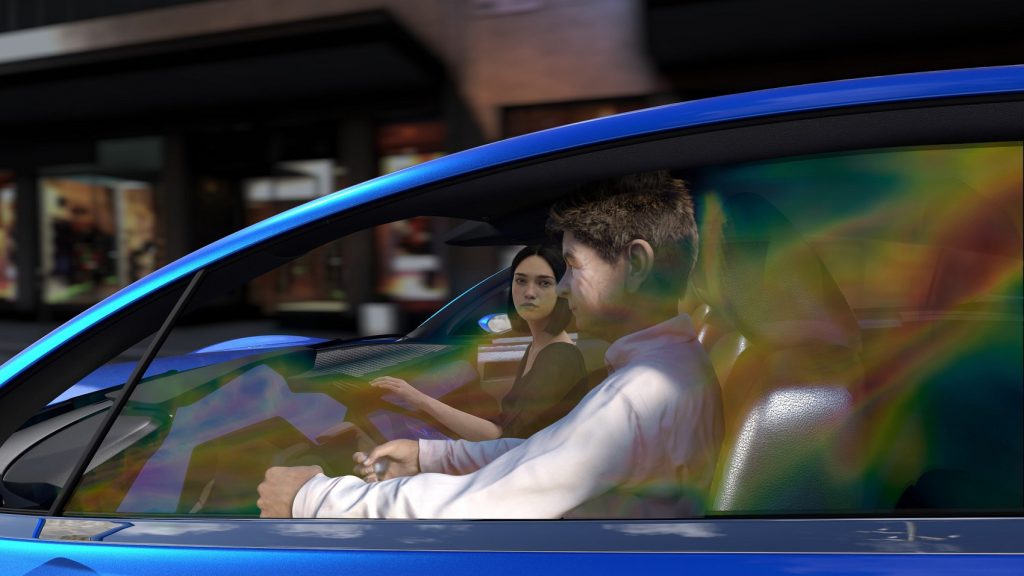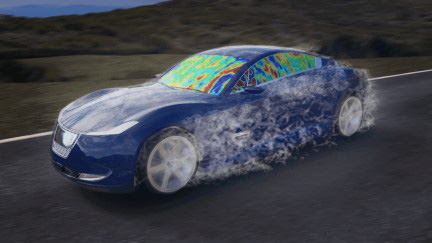After landing my first job after college, I traded in my aging tin can of a car for something sporty, premium, and brand spanking new. I loved everything about my new car when I drove it home. A few days later I took my first road trip and realized there was one more thing to love about my new car — it was so very quiet inside!
The rise of electric vehicles has raised the bar for what is an optimal passenger experience. Without the background noise of a combustion engine, all other noises become more obvious. But now we don’t just talk to each other, we talk to our cell phones and our entertainment devices. And sometimes, our car talks to us.

There is more to optimal cabin experience than noise abatement. A gasoline powered engine has no problem keeping the cabin warm when it is -40° outside; can an electric engine do the same? If so, at what cost to battery range and fuel economy? What are the lightweighting issues that allow an electric vehicle to carry passengers in comfort and safety? What new regulatory requirements impact the passenger experience?
Bringing a new electric vehicle to market — human-driven or autonomous — brings a host of challenges.
Most manufacturers want to craft a distinctive passenger experience, while meeting or exceeding all regulatory requirements. And they want to make money doing so. Simulation software is key to creating the optimal experience for the customer, while paying attention to both the bottom line and the regulatory environment. For example, engineering research shows that even subtle variations in interior ductwork improve HVAC performance. But no manufacturer these days would take the time to create working prototypes for each duct variation; they do it in simulation instead.
Multidisciplinary simulation tools are replacing single-element analysis. From a systems perspective, electric vehicles are every bit as complex as combustion-based vehicles. Not only must the cabin be comfortable, but every energy-using device — from adjustable seats to the USB port — must be accounted for as a part of total energy consumption. Distribution of weight is much different in electric vehicles, which impacts crashworthiness, aesthetics, and systems operations.

Recent research has found a recursive approach to EV design optimization can streamline the traditional many-steps process, making it easier to achieve full analysis. A team at the Department of Mechanical Engineering at Politecnico di Milano (Milan Polytechnic, Italy) determined that dividing simulation into separate studies for the vehicle cabin model and the battery-suspension model leads to faster solutions for each subsystem, when compared to a traditional all-in-one optimization approach.
Dassault Systemès engineers applied the latest techniques to a 10-part analysis of reducing automotive noise, for both combustion and electric engines. (The ten factors were greenhouse wind noise; component wind noise; gap/seal noise; sound package optimization; engine radiated noise; exhaust noise; cooling fan noise; sunroof and side window buffeting; underbody wind noise; and HVAC.) Using multidisciplinary simulation tools, the team found the typical automotive cabin noise study could save $1 million per prototype eliminated. They also achieved a 3 decibel noise reduction from early stage changes, and did the complete simulation in two days.
##
Editor:
To learn more about balancing vehicle comfort and performance through simulation, check out our e-book.
Or join us for a three-part event series and discover solutions that are widely used by vehicle manufacturers to find and mitigate potential noise and vibration issues rapidly from the earliest stages of design, reducing development risks and providing better overall designs.
